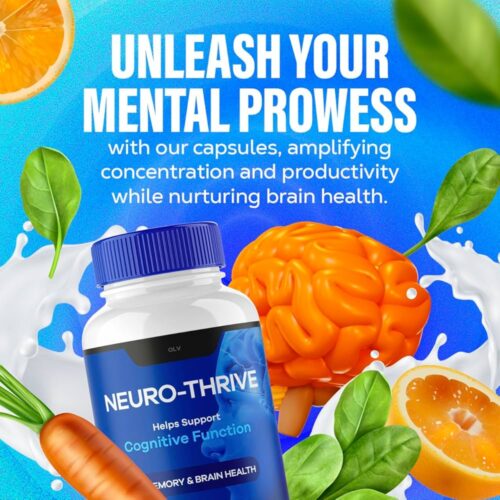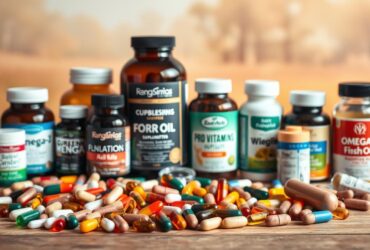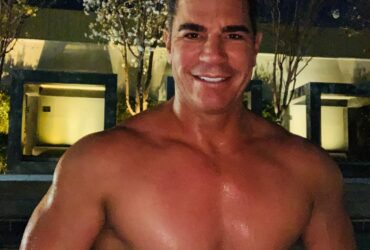Hormone changes are a natural part of aging for men. Testosterone levels decline gradually. Unlike women’s menopause, men experience a gradual decrease in hormone production over many years. This process, known as late-onset hypogonadism or age-related low testosterone, affects about 10% to 25% of men over 40. We’ll explore the signs, symptoms, and treatment options for men experiencing hormone changes, including the potential benefits and risks of hormone replacement therapy.
As men age, their bodies produce less testosterone, the primary male sex hormone. This decline in testosterone levels can lead to a range of physical, emotional, and sexual health concerns. While some men may not experience significant symptoms, others may notice changes in their energy, mood, muscle mass, and sexual function. Understanding the natural progression of testosterone decline and recognizing the signs of low levels can help men make informed decisions about their health and well-being.
Hormone replacement therapy (HRT), also known as testosterone therapy, has emerged as a potential treatment option for men with age-related low testosterone. This therapy aims to restore testosterone levels to a more youthful state, potentially alleviating symptoms and improving overall health. However, the benefits and risks of HRT in healthy men over 40 are complex and still being studied. In this article, we’ll delve into the science behind male hormone changes, explore the potential applications of HRT, and discuss the important safety considerations for men considering this treatment.
Understanding Male Hormone Changes After 40
Men in their 40s and beyond often see hormone level changes, especially in testosterone. This drop can affect their health and happiness.
Natural Testosterone Decline vs. Medical Deficiency
Testosterone levels in men drop about 1% each year after 40. This is normal aging. But, some men might see a bigger drop, called late-onset hypogonadism. This can happen due to obesity, type 2 diabetes, or some medicines.
The Role of Testosterone in Male Health
Testosterone is key for men’s health. It helps with sex development, muscle, red blood cells, and bones. When testosterone goes down, men might feel different physically and emotionally.
Signs of Low Testosterone Levels
- Reduced sexual desire
- Erectile dysfunction
- Breast discomfort
- Infertility
- Height loss
- Hot flushes
- Decreased energy
- Depressed mood
- Poor concentration
- Sleep disturbances
- Reduced muscle strength
- Increased body fat
It’s important for men over 40 to know these signs of low testosterone levels. This helps them keep their male health in check and get help if needed.
Hormone Replacement Therapy: Benefits and Applications
Hormone replacement therapy (HRT) can help men with low testosterone levels, like those with hypogonadism. The American College of Physicians suggests testosterone therapy for men with sexual issues who want to improve. The Endocrine Society also recommends testosterone therapy for men with low testosterone due to aging and symptoms.
The benefits of HRT benefits include better sex, more muscle, and stronger bones. But, the success of hormone treatment for healthy aging men is still being studied.
| Benefit | Description |
|---|---|
| Improved Sexual Function | Testosterone therapy can boost sexual desire, performance, and satisfaction in men with low testosterone. |
| Increased Muscle Mass | Testosterone is key for muscle growth and upkeep. HRT can aid in building and keeping lean muscle. |
| Better Bone Density | Testosterone is vital for strong bones. HRT can prevent osteoporosis and lower fracture risk. |
The benefits of HRT benefits are clear for men with hormone deficiencies. But, the effectiveness of testosterone therapy for healthy aging men is still debated and researched.

Common Symptoms That May Indicate Need for Treatment
As men get older, their testosterone levels go down. This is called male menopause or andropause. This drop in hormones can cause many health problems. These might mean a man needs testosterone replacement therapy (TRT).
Physical Symptoms and Changes
Lower testosterone can make muscles smaller and fat bigger. It also weakens bones. Men might feel very tired, making it hard to stay active. These signs can really hurt a man’s health and happiness.
Emotional and Cognitive Effects
The low testosterone symptoms of male menopause affect feelings and thinking too. Mood swings, sadness, less motivation, and trouble focusing are common. These feelings can be tough for men going through this change.
Sexual Health Impacts
The biggest sign of andropause is how it affects sex. Men might want sex less, have trouble getting an erection, and have fewer erections. These problems can really hurt a man’s life and how he feels about himself.
It’s very important for men over 40 to notice and deal with these low testosterone symptoms. This can help them stay healthy and might even help with testosterone replacement therapy.
Types of Testosterone Treatment Options
As men get older, their testosterone levels go down. For those with low testosterone symptoms, there are treatments to help. These include:
- Testosterone Injections – Given every 2-3 weeks, these injections keep testosterone levels steady.
- Testosterone Patches – Applied daily, these patches release testosterone through the skin.
- Topical Testosterone Gel – Used once a day, these gels help increase testosterone levels.
Each method has its own way of being used and side effects. The best treatment depends on personal choices and doctor advice. It’s important to follow instructions carefully to avoid risks, especially for others.
| Treatment Type | Application | Potential Side Effects |
|---|---|---|
| Testosterone Injections | Intramuscular injections every 2-3 weeks | Acne, sleep disturbances, prostate growth, reduced sperm production |
| Testosterone Patches | Daily application to back, arms, buttocks, or abdomen | Skin irritation, redness, itching at application site |
| Topical Testosterone Gel | Daily application to shoulders, arms, or abdomen | Skin irritation, transfer to others through skin contact |
Regular check-ups with doctors are key to safe testosterone therapy. By looking into these options, men can find the right treatment for their needs and health.
Risks and Safety Considerations of HRT
Hormone replacement therapy (HRT) helps manage menopausal symptoms. But, it’s important to know the risks and safety issues. HRT may raise the risk of heart problems and affect prostate health. It can also cause other side effects.
Cardiovascular Concerns
HRT, especially in tablet form, may slightly increase blood clot and stroke risk. This is more likely in people over 60. But, risks are lower with patches, sprays, and gels. Research shows HRT has little effect on heart disease.
Prostate Health Implications
HRT’s effect on prostate health is still being studied. Some research suggests it may grow existing prostate cancer. Men on HRT should get regular prostate checks to keep their health in check.
Other Potential Side Effects
HRT can cause other side effects too. These include acne, fluid retention, and enlarged breasts. It may also shrink testicles, worsen sleep apnea, and raise cholesterol. The FDA warns about secondary exposure risks. It’s key to follow application instructions and see a doctor regularly to avoid these issues.










